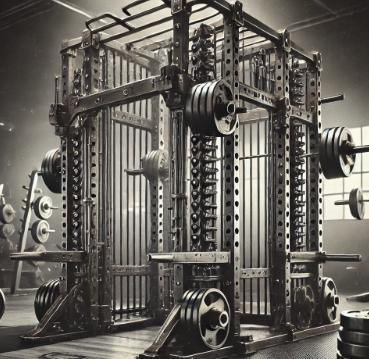How to Grow Your Calf Muscles
Published By GainzTracker, 29th September 2024

Introduction to Calf Muscle Training
Many gym-goers overlook the importance of training their calf muscles, yet strong calves are essential for both aesthetics and functional movement. Well-developed calf muscles not only enhance the overall appearance of your legs but also provide strength for walking, running, and other athletic activities. In this guide, we'll explore how to properly train your calves to stimulate muscle growth and strength.
Why Calf Training is Important
The calves consist of two primary muscles: the gastrocnemius and the soleus. These muscles work together to allow you to flex your ankle and point your toes, movements that are crucial in activities like running, jumping, and even standing. Training these muscles not only enhances leg aesthetics but also improves lower body performance.
Common Mistakes in Calf Training
- Neglecting to train both the gastrocnemius and the soleus muscles
- Using too much weight, sacrificing form, and reducing the range of motion
- Not focusing on the eccentric (lowering) portion of the movement
- Skipping calf workouts or training them infrequently
Effective Calf Muscle Exercises
Standing Calf Raises
This exercise targets the gastrocnemius muscle and is essential for building the outer portion of your calves. It can be performed with either a barbell on your shoulders or using a machine.
- Stand with your feet shoulder-width apart
- Lift your heels as high as possible while contracting your calves
- Lower your heels slowly to feel the stretch at the bottom
- Perform 3-4 sets of 12-15 repetitions
Seated Calf Raises
This exercise focuses on the soleus muscle, which is located beneath the gastrocnemius. Seated calf raises allow for a more isolated movement, helping to fully target the soleus.
- Begin by sitting on a calf raise machine or bench with a weight resting on your knees
- Push through the balls of your feet to lift your heels as high as possible
- Slowly lower your heels to return to the starting position
- Aim for 3-4 sets of 12-20 repetitions
Additional Tips for Growing Calf Muscles
- Progressive Overload: Gradually increase the weight you use for calf exercises over time to continuously challenge the muscles
- Train Consistently: Aim to train your calves at least two to three times per week for maximum results
- Full Range of Motion: Ensure you lower your heels completely in each rep to engage the muscles fully
- Vary Your Reps: Mix low-rep strength training with high-rep endurance work to stimulate different muscle fibers
- Stretch Regularly: Stretching your calves after each workout helps improve flexibility and prevent injury
Conclusion
Calf muscle training is often neglected, but it's an essential part of building a balanced and strong lower body. By consistently working on both the gastrocnemius and soleus muscles through exercises like standing and seated calf raises, you can grow stronger, more defined calves. Remember to use proper form, apply progressive overload, and stay consistent in your routine. With the right approach, your calf muscles will begin to grow, improving your athletic performance and overall leg aesthetics.
Disclaimer: The information provided in this article is for educational purposes only and is not intended as a substitute for professional medical advice, diagnosis, or treatment. Always consult with a healthcare provider before beginning any exercise program. Use caution when performing exercises to avoid injury.